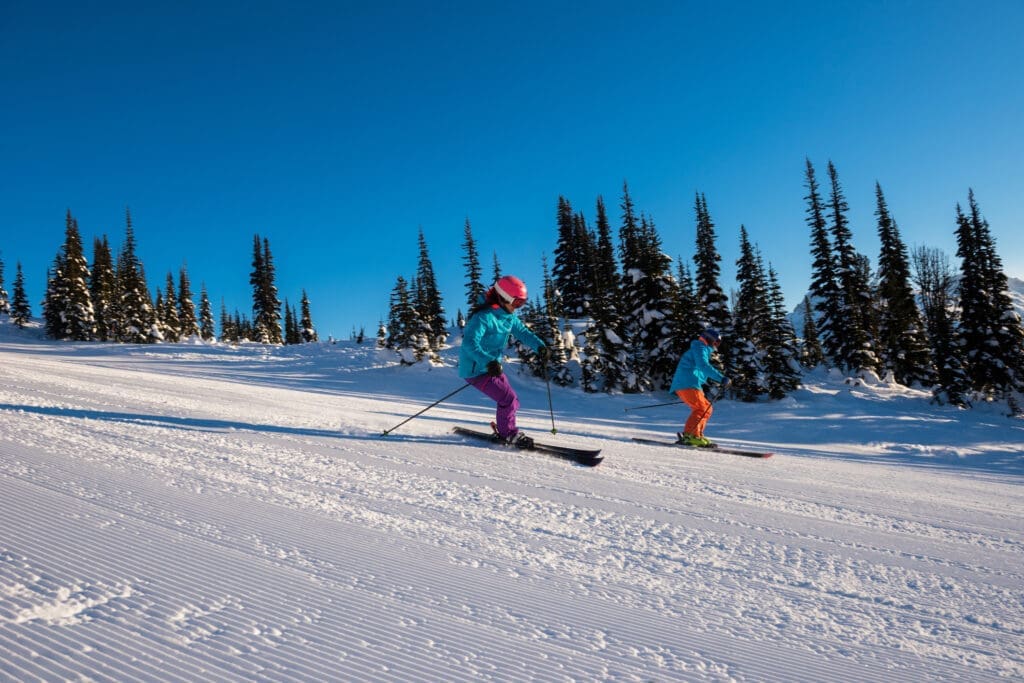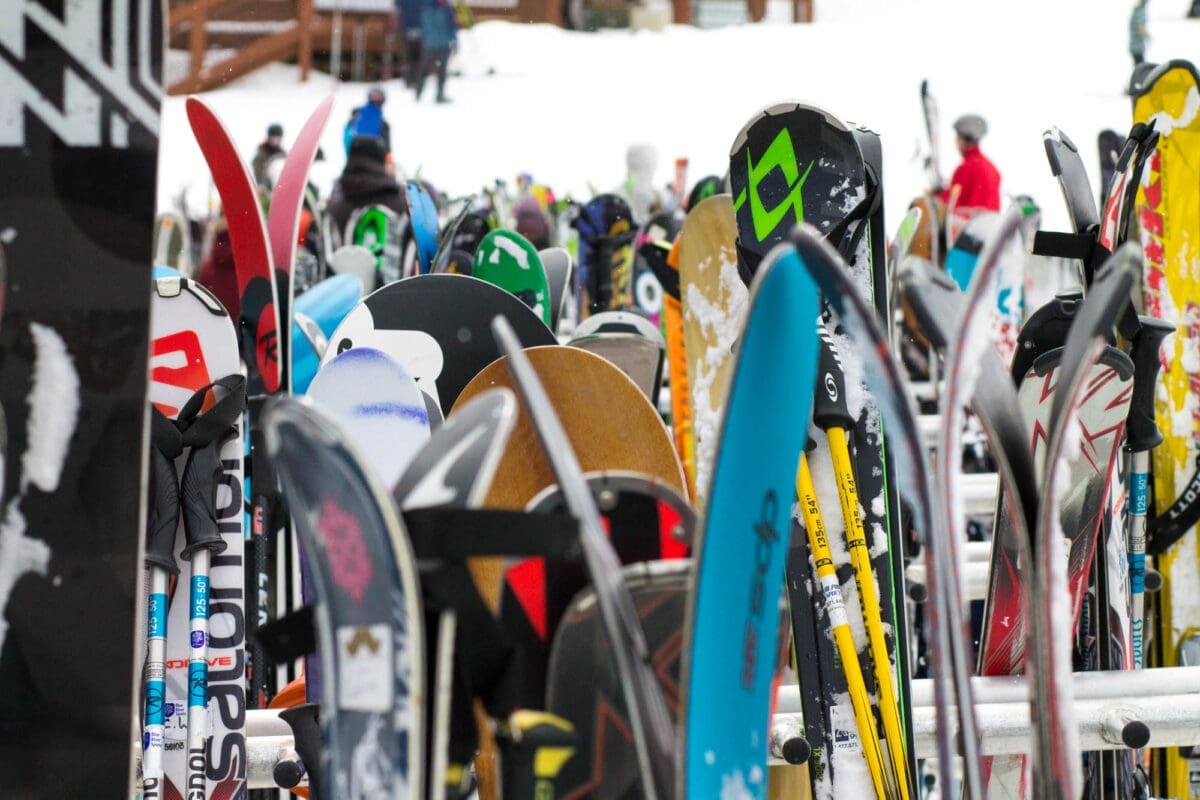Beginner vs. Intermediate Skis: When to Level Up
We all have a favorite gearhead in our lives – someone who takes researching and choosing their ideal equipment to take their skiing to the next level. Luckily with Black Tie Ski Rentals, you don’t have to be a resident gearhead. Our expert team will help you with choosing the right ski or snowboard equipment just for you. We carry an extensive selection of the very best skis and snowboards from a variety of top brands, offering a full range for all ability levels. Our custom fittings are tailored to each guest based on your rental package, ability level and the current snow conditions.
If you want to know what are the very best skis? Unfortunately it isn’t that straight forward, but here we will break down the differences beginner skis vs intermediate skis but here we will break down what to look for in a ski so that you can improve your skiing and have the best possible experience on the mountain.
Transitioning from beginner to intermediate skis can improve your skill as well as make the sport more enjoyable. Here are a few things to consider when making the move from entry-level to intermediate skis, and if it’s the right time for you to do so.
Understanding Beginner vs Intermediate Skis
What Defines Beginner Skis
There are a few characteristics that make a beginner ski ideal for those just learning: a softer flex that makes initiating those first turns easier, narrower dimensions for groomed run skiing, and a lighter so they are easier to maneuver. This style of ski offers stability for new skiers and helps build confidence on the slopes while learning. It’s best to talk with a ski technician about the proper length for you, but a good general rule is to find a ski that, when held vertically directly in front of you, comes to about the height of your chin to the bottom of your nose.
Transitioning to Intermediate Skis
Perhaps the easiest rule to use when determining if you’re ready for a new pair of sticks is if you’re skiing more challenging terrain. Are your days on the bunny hill done? Have you said goodbye to the green circle runs? Then it’s probably time to level up and consider a more intermediate ski to match the progression of your skiing.
If a beginner skier’s ability determines the terrain on which they ski, then an intermediate skier’s terrain desires might determine the ski they need next. This is to say that increased comfort across various terrain is a good sign it’s time to swap the beginner skis for something more. Additionally, if you’re comfortable edging your skis and arching a turn, now is a good time to talk to your Black Tie Skis fitter about intermediate ski offerings.
True intermediate skis ramp up the flex a few notches. This means a slightly stiffer – and therefore more responsive and stable – ski. Intermediate skis are also typically wider than beginner skis. As for length, find a ski that lands somewhere between your nose and your eyebrow.

Choosing the Right Skis for You
There are quite a few factors to consider when investing in a new pair of skis, including:
Skill Level
From answering a few basic questions at your local shop to working with an instructor to establish your current ability, make sure to take your skill level into account.
Terrain & Preferences
Park or powder? Groomed or off-piste? Trees or glades? The type of terrain you most enjoy will dictate which kind of ski is right for you.
Skiing Style and Goals
If you’re someone who likes to arc big, bold turns, then you’ll want to look for a little more side cut. Or, if you prefer poppy powder turns, a ski that is wider under foot will be better for you. Your skiing style, goals, and accessible terrain are all important factors to consider.
A key step in finding the right ski for you before you make your final decision is demoing the skis. Trying the equipment on the slopes is the best way to evaluate how you feel while skiing on a different brand, style, length, width or rocker profile.
Tips for Making the Transition
While your new intermediate skis might be the ticket to bigger, more challenging terrain, make sure to spend some time on milder slopes testing out your new equipment before you take it all the way to the top. This allows you to make any necessary adjustments to the ski/binding setup and tweak your turning technique to maximize the torque and power of your new skis. Also talk with instructors and your ski tech to learn more about customizing your ski experience with terrain suggestions and other tips that will help you get the most out of your newly fitted intermediate skis.
Making the leap from beginner to intermediate skis is a surefire way to keep progressing your skill. Doing so will have you asking about advanced skis before you know it. New ski equipment can come with a learning curve, but it’s one worth making if your goal is to be able to ski more varied terrain more confidently. Enjoy every turn along the way!
